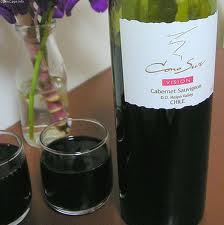The Unique Chilean Wine Country
Chile wine tours have brought many travelers into the region to sample hundreds of years of experience in wine production. A combination of Spanish, French, and native Chilean influences have brought this country to the forefront of the wine industry.
Wine was brought to Chile in the 16th century when Spanish missionaries began growing grapes to produce wine for Catholic rituals. Chile has many fertile valleys which were optimal growing climate for vineyards. Other wine producers learned of the success in Chile and began to grow other varieties of grape.

Chile is the only country with large scale vineyards that has never had an infestation of the pest Phylloxera. This is because of its dry summers and its geographic shelter from the introduction of these pests and diseases. Thus, Chilean wines have less need for pesticides when growing their grapes. When French vineyards had an outbreak of Phylloxera in the 19th century, many French winemakers immigrated to Chile.
The following are some notable Chile wine tour regions:
- Aconcagua Valley – About 1.5 hours north of Santiago, Mount Aconcagua’s snowmelt provides water needed for the dry valley’s vineyards. Cabernet Sauvignons, Merlots, and Syrahs are cultivated here. Nearby, visitors can enjoy Termas de Jahuel hot springs and hiking in the La Campana National Park.
- Casablanca Valley – Southwest along the Pacific Coast of Chile, this region is known for its white wines, including Rieslings, Chardonnays, and Sauvignon Blancs. Fresh-caught Chilean sea bass pairs perfectly with these wines, and the sea breeze is a perfect remedy to the summer heat.
- San Antonio Valley – Red and white grapes are grown on this coastal region just south of Casablanca valley. Delicate Pinot Noirs as well as Sauvignon Blancs and Chardonnays are among the best wines available.
- Maipo Valley – Most of Chile’s well-renowned wines come from this area, which stretches from Santiago to the coast. Chile’s best Cabernets are made here, and some wineries are high up in the Andes reaching up to 2,000 feet above sea level.
- Colchagua Valley – Chile’s trademark wine, Carmenère, thrives in the hot and dry conditions. This area is known for its red wines, particularly Carmenère and Malbec. The town of Santa Cruz holds a harvest festival every year with wine and food pairings.
- Bio Bio Valley – One of the southern regions of the wine valleys of Chile, Bio Bio still grows the original Spanish Pais grape variety, which dates back to the 16th century. The region is also known for its Gewurztraminer, Rieslings, and Chardonnays.
Chile tour season begins in November and ends in April, with January and February being the hottest summer months. Depending on the region you visit, February through April wine tours in Chile offer the most harvest festivals.
Stephen Craig and his team of writers has taken advantage of many guest blogging oppotunities on hundreds of sites. Follow him @SCraigSEO.

